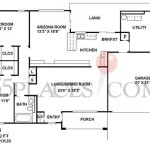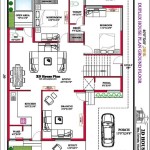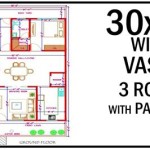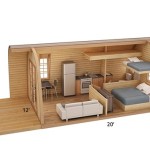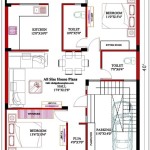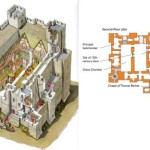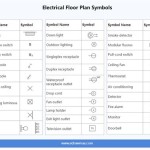Modern 4-Bedroom House Plans: Single Story with Dimensions
The appeal of single-story, four-bedroom house plans is rooted in their practicality and adaptability to diverse lifestyles. Modern designs emphasize open-concept living spaces, seamless integration with outdoor areas, and energy efficiency. When considering a four-bedroom single-story home, understanding the dimensions and layout options is paramount to achieving a comfortable and functional living environment. This article explores key considerations for modern four-bedroom house plans, focusing on single-story designs with specific attention to dimensions and spatial organization.
A significant advantage of single-story homes is their accessibility. Eliminating stairs makes them ideal for families with young children, individuals with mobility challenges, and aging homeowners. The horizontal floor plan promotes ease of movement and reduces the risk of falls. Furthermore, single-story construction often simplifies maintenance and cleaning. All areas are easily reachable, and exterior maintenance, such as roof repairs or gutter cleaning, is generally less complicated and costly.
Modern architectural styles incorporated into single-story four-bedroom house plans often prioritize natural light and ventilation. Large windows, skylights, and strategically placed doors maximize daylight penetration and create a bright and airy atmosphere. Open floor plans further enhance the flow of natural light throughout the living spaces. These designs also tend to incorporate sustainable building materials and energy-efficient features, reflecting a growing awareness of environmental responsibility.
Careful consideration of site orientation is crucial when planning a single-story home. Positioning the house to maximize solar gain in winter and minimize it in summer can significantly reduce energy consumption. Landscaping can further enhance energy efficiency by providing shade and acting as a windbreak. The orientation should also take into account prevailing winds to optimize natural ventilation and improve indoor air quality.
Key Point 1: Optimizing Space and Layout in a Four-Bedroom Single-Story Design
Effective space planning is critical in a four-bedroom single-story house plan. The layout should prioritize functionality and flow, ensuring that each room serves its intended purpose while contributing to the overall harmony of the home. The separation of living areas from sleeping areas is a common design principle that enhances privacy and reduces noise transmission.
The master suite is typically located at one end of the house, providing a private retreat for the homeowners. It often includes a spacious bedroom, a walk-in closet, and a luxurious en-suite bathroom. The remaining three bedrooms are usually grouped together in a separate wing, often sharing a common bathroom or having individual en-suite bathrooms depending on the design.
The living areas, including the living room, dining room, and kitchen, are typically located in the center of the house, creating a central hub for family activities and social gatherings. Open-concept designs are popular in modern homes, blurring the boundaries between these spaces and creating a sense of spaciousness and connectivity. However, carefully planned zoning is essential to define different functional areas within the open space.
Hallways should be kept to a minimum to maximize usable floor space. Wide hallways can double as circulation paths and display areas, creating a more flexible and functional space. Strategic placement of storage areas, such as closets and built-in shelves, can further optimize space utilization and minimize clutter. The design should also consider the placement of mechanical systems, such as the HVAC unit and water heater, to minimize noise and maximize accessibility for maintenance.
Dimensions are fundamental to effective space planning. A typical master bedroom might measure 14 feet by 16 feet, while secondary bedrooms might be slightly smaller, around 12 feet by 12 feet. The living room might be 18 feet by 20 feet, and the kitchen and dining area could occupy a combined space of 16 feet by 24 feet. These dimensions are just examples, and the actual sizes will vary depending on the overall size of the house and the specific design preferences of the homeowner. It's important to consult with an architect or designer to determine the optimal dimensions for each room based on the desired functionality and aesthetic.
Key Point 2: Integrating Indoor and Outdoor Living Spaces
Modern house plans often emphasize the connection between indoor and outdoor living spaces. This integration can enhance the livability of the home and create a more enjoyable living experience. Large windows, sliding glass doors, and French doors are commonly used to blur the boundaries between the interior and exterior, allowing natural light to flood the living spaces and providing easy access to outdoor areas.
Patios, decks, and porches are essential elements of outdoor living spaces. They provide areas for relaxation, dining, and entertaining. A covered patio or porch can extend the living space outdoors, providing protection from the elements and allowing for year-round enjoyment. These outdoor spaces should be designed to complement the architectural style of the house and to blend seamlessly with the surrounding landscape.
Outdoor kitchens are becoming increasingly popular, allowing homeowners to prepare and enjoy meals outdoors. These kitchens typically include a grill, a sink, a countertop, and storage space. They can be as simple or as elaborate as desired, depending on the homeowner's budget and preferences. An outdoor dining area adjacent to the kitchen creates a convenient and enjoyable space for al fresco meals.
Landscaping plays a crucial role in integrating indoor and outdoor living spaces. Trees, shrubs, and flowers can create a lush and inviting outdoor environment. Strategic placement of plants can provide shade, privacy, and visual interest. Water features, such as fountains and ponds, can add a calming and relaxing element to the outdoor space. The landscape design should complement the architectural style of the house and create a harmonious connection between the built environment and the natural environment.
Considerations for accessibility are important when integrating indoor and outdoor spaces. Ramps or gently sloping pathways can provide access for individuals with mobility challenges. Wide doorways and smooth transitions between the interior and exterior can further enhance accessibility. The outdoor space should be designed to be inclusive and welcoming to all users.
Key Point 3: Incorporating Universal Design Principles and Accessibility Features
Universal design principles aim to create homes that are accessible and usable by people of all ages and abilities. Incorporating these principles into a four-bedroom single-story house plan can enhance the livability and long-term value of the home. Features such as wider doorways, level thresholds, and grab bars in bathrooms can make the home more accessible to individuals with mobility challenges.
Wider doorways, typically 36 inches wide, allow for easier passage of wheelchairs and walkers. Door levers are easier to operate than doorknobs, especially for individuals with arthritis or limited hand strength. Level thresholds eliminate the need for stepping over a raised threshold, making it easier to move between rooms and between the interior and exterior.
Bathrooms should be designed with accessibility in mind. Grab bars should be installed near the toilet and in the shower or bathtub to provide support and stability. A curbless shower eliminates the need for stepping over a curb, making it easier to enter and exit the shower. A comfort-height toilet is taller than a standard toilet, making it easier to sit down and stand up. Sufficient clear floor space should be provided in the bathroom to allow for maneuvering with a wheelchair or walker.
Kitchens should also be designed with accessibility in mind. Adjustable-height countertops and sinks can accommodate users of different heights. Pull-out shelves and drawers make it easier to access items stored in lower cabinets. A side-by-side refrigerator is easier to access than a traditional refrigerator with a freezer on top or bottom. A clear turning radius should be provided in the kitchen to allow for maneuvering with a wheelchair or walker.
Lighting is an important consideration for accessibility. Adequate lighting can improve visibility and reduce the risk of falls. Task lighting should be provided in areas where specific tasks are performed, such as the kitchen counter and the bathroom vanity. Motion-sensor lighting can be installed in hallways and bathrooms to provide automatic illumination when needed. Contrasting colors can be used to highlight edges and transitions, making it easier for individuals with visual impairments to navigate the home.
Floor plans should be designed to be adaptable to changing needs. Walls can be reinforced to allow for the future installation of grab bars or other assistive devices. Electrical outlets and switches should be placed at accessible heights. The design should also consider the potential for future modifications, such as adding a ramp or widening doorways.
The dimensions of the rooms themselves can impact accessibility. Larger rooms provide more space for maneuvering and accommodating assistive devices. A master bedroom with a spacious en-suite bathroom is particularly important for individuals with mobility challenges. The size of the bedrooms should also be considered in relation to the potential need for medical equipment or caregivers.
The careful integration of universal design principles and accessibility features can significantly enhance the livability and long-term value of a four-bedroom single-story house plan. By considering the needs of all users, the home can be designed to be comfortable, safe, and functional for people of all ages and abilities.

Cool Four Bedroom House Plans New Home Design D7e 2024

Bedroom Single Y House Design Plans For 4 Modern Style

Minimalist Single Story House Plan With Four Bedrooms And Two Bathrooms Cool Concepts

4 Bedroom House Plans One Story And Cottage Floor

40 X 60 Modern House Architectural Plans 4 Bedroom

Four Bedroom House Plans Drawing For 189sqm Nethouseplans

One Story 4 Bed Modern Farmhouse Plan With Home Office 2607 Sq Ft 51841hz Architectural Designs House Plans

1 Y 4 Bedroom Bathroom Floor Plan Arcline Architecture

20 4 Bedroom House Plans Ideas For N Kerala Styles

Vancouver 4 Bedroom Single Y House Plan Porter Davis Denah Rumah


